
The World Gold Council recently listed Suhani Pittie as one of the top ten inventive and ingenious jewellery designers in the world. Pittie who showed at the recently concluded Lakme Fashion Week talks about how she made it
For someone who's been in the business for a little over eight years, jewellery designer Suhani Pittie has made considerable success. She has been one of the finalists at British Council's Young Fashion Entrepreneur Award in 2009 and has showed her collection before Prince Charles and his family.
She regularly finds herself being listed in the 'women to watch out for' and 'rising star' lists and has recently been named as one of the top ten 'most inventive and ingenious jewellery designers in the world' by the World Gold Council.
Pittie's latest collection Child of Eden that she showcased at Lakme Fashion Week Summer-Resort 2012, sought inspiration from the innocence of childhood. Motifs of delicate leaves, entwining vines, roses, a hint of a graceful swan's wing, the elegant peacock, the beak of the Hornbill featured prominently in her collection.
The idea was to reminisce about the lost innocence of childhood and everything pure.
Pittie, who retails from her flagship store in Hyderabad as well as other stores across the country, is known for contemporary jewellery that ranges from Rs 1,000 to Rs 21,000 and lifestyle products in copper and silver that range from Rs 2,000 to Rs 65,000.
In an interview with Rediff.com, the 31-year-old designer talks about her childhood, the day she saw a picture of amber when she was seven and how that got her started on a lifelong passion for gems and precious stones.

At the outset, do tell us something about Child of Eden, your latest collection.
As we grow up, we tend to the inner child -- one that loves roses and leaves and press them in books, one who loves the idea of being in love and one who is yet to be caught up in the social humdrum.
The collection was a looking back of sorts at a time when we were naive, little princesses with little or no care in the world.
What was your childhood like?
Like any other child, I suppose (growing in the '80s). I was born and raised in Kolkata, playing football and reading Chacha Chaudhary and Tinkle and am the youngest of three sisters.
As a people, Kolkatans are very passionate about anything they do -- be it our trams or football or our books. So there is nothing average that we like to do. Every Kolkatan is passionate about something and this was the mood around which that I grew up with.
It was partly because I was in Kolkata (and in part because of my parents) that I got more liberties than a normal Marwari girl ever could dream of.
My parents have been very giving and extremely supportive in what the three of us did.
So even though all of us were fairly good at academics, none of us have taken the stereotypical path. All of us are designers -- I turned to jewellery, Suruchi to interior designing and Anamika (Khanna) became a fashion designer.
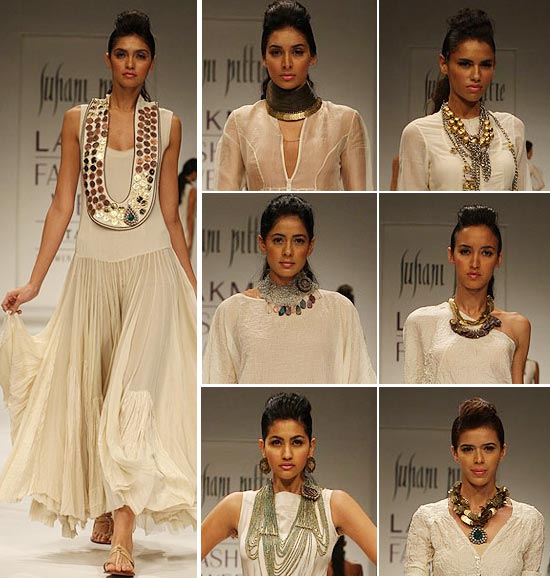
How did the interest in gemology come about?
As surprising as it may sound, I knew I wanted to be a gemologist since I was seven. Of course, at the time I didn't know what it meant but that was when my fascination really began.
I remember being very excited by a picture of amber a book. My library teacher explained to me that it was a fossilised bee. Eventually (as I grew up) I tried to figure out what the study of this would be. When I first discovered about gemology, I hadn't known it was a study of precious stones or jewellery. I was fascinated with colourful stones and that was that.
While growing up, I was also into theatre and so if I wouldn't have been a gemologist, I would've wanted to be in the movies -- as an actor, director or into production.
My parents knew of both my interests and quite obviously they thought it was safe for me to study gemology.
After I finished class 12, I went to Gemological Institute of America to get formal training in gemology. It was a big step for my parents because in my (immediate and extended) family, I was the first girl to go overseas.
On returning, I started taking gemology workshops and pretty much started earning by the time I was 19 years old. I completed by graduation in Commerce and wanted to complete my Master's (degree) too but by the time I was 23, I was married.
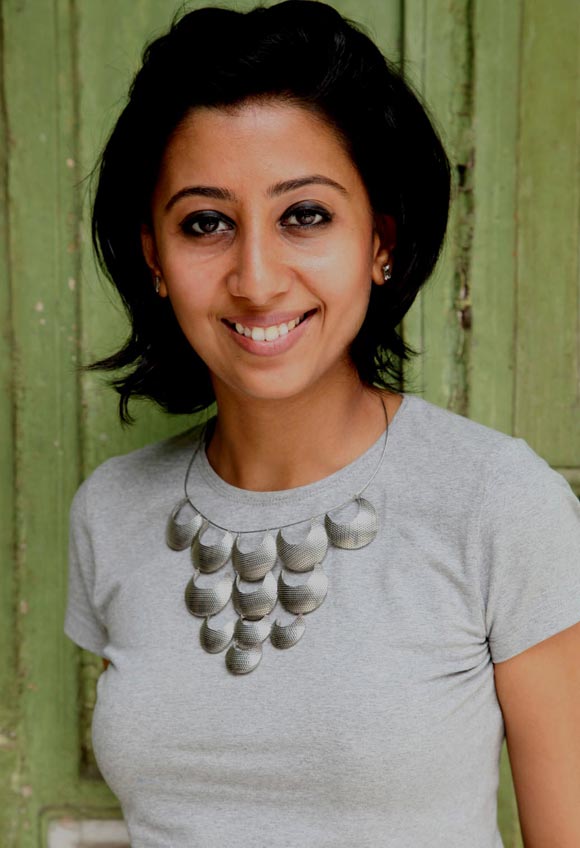
What were your learnings at GIA?
I think for someone who at most times was playing football on the streets as a child, GIA inculcated in me a lot of discipline.
There was a rule, for instance, at the Institute that if you turned up late for a class more than three times, you'd be asked to leave.
If in a test we misspelt something or missed refractive index by even a decimal fraction, we'd be failed.
We were after all dealing with stones that are mighty expensive and often have emotional value attached to it.
Needless to say, having graduated from there, the advantages of studying at an institute as well-known as GIA were countless. I started my company almost immediately.
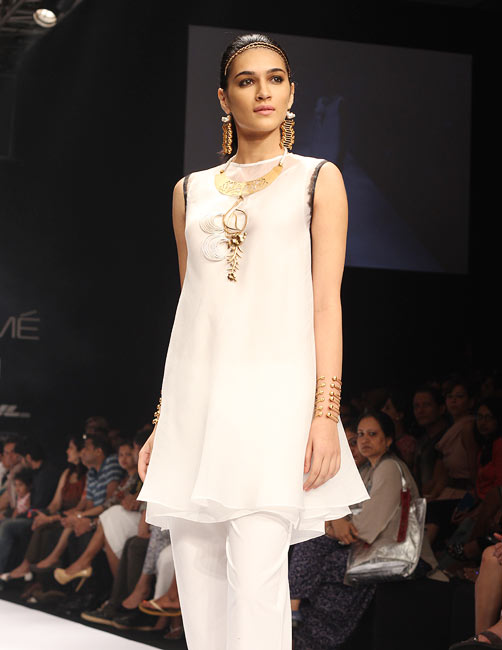
Could you tell us something about your family and how they influenced you and who you became?
I've seen my father and Anamika work really hard. My dad has cold storages and tea estates and also over looks Anamika's administration. His day begins at 6 am and the only breaks he takes are cups and cups of tea!
I remember at age 14 he would take me to his office and all I would do all day is sit with the receptionist and put the office files in order and stack the papers correctly. He always insisted on learning the basics first. Today I can't thank him enough because I think that's what makes good managers at work.
He never rests. I really don't know of anyone who is this hardworking, intelligent and with such brilliant business acumen. When I wanted to start my gemology institute, not once did he flinch at the idea. He's been a tremendous force of strength and so is my mother who keeps it all together.
From Anamika, I have learnt the most important lesson of my life: there always scope to be better. We can't be satisfied with what we have done. Now its so ingrained in me that the minute I finish one show. I start thinking about how I can make the next one even better. There is no room for complacency. She is very creative and works awfully hard and never ever rests.
Actually no one in my family puts up their feet and rests. Now that I think of it even my mum is constantly doing something! Stouvant starts his day at 5:30 am ends it at 9 pm and even after that we are playing the Xbox Kinect. We never stop! I think Anamika designs even in her sleep!
How did the World Gold Council honour come about?
Well, that one came as a total surprise and totally out of the blue. The Council called and had informed me of the enlisting. I thought somebody was playing a prank.
I was in Kolkata with dad, mum, Stouvant (Stu) and Anamika and I remember saying, "Someone called from the World Gold Council and said the brand is in the list of 10 best designers in the world. If this true you guys have to buy Stu and me a strawberry sorbet each and if its a prank... hell you got to buy us two because someone thought we were deserving of a prank like this!
Turns out I had to make peace with one sorbet
On a serious note, it's an honor and its extremely encouraging. I'm still waiting for a treat from Stu though.
Do you cater to individual tastes? Do you change your designs for clients and where do you draw the line?
I do personalised orders all the time and in fact I enjoy it a lot because that comes with a certain design idea from the client and I have to work around it. It's a lot of fun. Where do I stop? The minute is starts looking non-Suhani Pittie ethos, I put my pencil down. Generally the client comes around, because if they have come to us, they are obviosuly are attracted to our style of design!
Where do you seek your inspiration from?
Metal, mood and my surroundings are my sources of inspiration. What else? Let's see: the old city of Charminar -- (Stouvant's) 200 year-old ancestral haveli, the dancers on the streets, the women with their ringing anklets, the bangle maker, the local potter, the by lanes, old photographs, tall buildings, brass, steel and of course history books because I'm quite enchanted by the past.
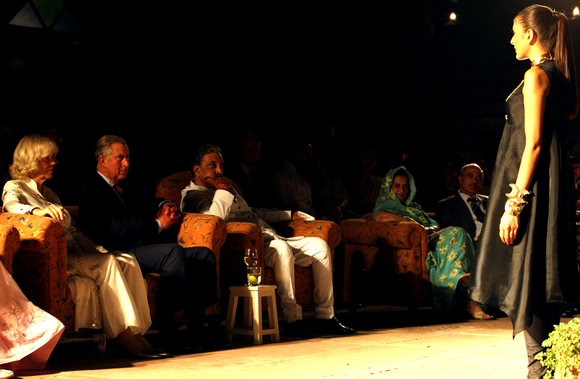
How did you put your education to use when you returned to India?
When I returned my father wanted to know what I was hoping to do. I told him I was planning to conduct gemology workshops in Kolkata. He was kind enough to lend me money so I could buy some precious stones to work on. But he was quick to ask me when he could expect a RoI!
I assured him he'd get his money back and placed a classified ad in The Telegraph. After the first workshop, word got out and the media covered my workshop, which was a unique thing back then.
Soon I was organising workshops for jewellery firms, schools and clubs. Within a year, I managed to repay my father.
By 2004, my parents had found me a match, I was married to Stouvant and I moved to Hyderabad to live in his sprawling ancestral home.
It was around the same time that I put up a small stall at Bridal Asia (a prominent exhibition) and asked Stouvant to join me.
He had just returned from Boston, having studied marketing and finance. At the exhibition, he discovered that my designs were working. Stores such as Ensemble were picking up my work and that's when he figured that we could make this a successful business.
Today, I do the designing and he manages everything else.
People also realise that we don't treat this as a hobby but rather a professional company. And Stou has been a big reason for that to happen. Although ours was an arranged match, we get along like a house on fire. He ensures that everything is in place, calling it a day sometimes as late as 1.30 am. There are days when I don't feel like designing but his work never stops. I've not known a lot of men who would step back and let the woman take the limelight.
He's very dexterous, which takes a huge load off my head. When we were invited to show our work before Prince Charles in 2010 we were told that they hadn't received a more organised set of paperwork before. It was a great pat-on-the-back for him.
Talking of Prince Charles, could you tell us about British Council's Young Fashion Entrepreneur Awards where you were one of the finalists, and which also I suppose opened doors to the event with the British Royal Family?
We were one of the six finalists at the event though we didn't win. In retrospect I realise it was a good thing because I don't know what I would've done if I had done (part of the award is an opportunity to network prospective clients in England) because we were still setting up our company, paying off factory rent etc.
However I was obviously not expecting a call from the British Council inviting me to show my collection before Prince Charles and his family (who were to visit Jodhpur just before the Commonwealth Games)
I thought it was a prank and I put the phone down. The lady on the other end called up again and sent an email (and later) a hard copy of the invite. That was when I realised it was the real thing.
The thing with this kind of an opportunity is that there are no second chances. I wasn't sure if we would be able to pull it off but the whole experience of putting it together -- not so much for royalty but rather for an institution as important as the British Council who thought we were fit for royalty -- was great. It was a great approval for us.
We did of course talk with the prince and his family -- we'd been given a list of protocols and ways in which we were to address him -- and he was fascinated that all of our work was handmade and that no machines were involved in the process.
It'd be interesting to know what you'd designed for the Prince Charles show...
The line was a medley of my Summer-Resort and Winter-Festive 2010 collection. (Pittie's Summer-Resort 2010 collection, Grunge Begum that extensively used copper, celebrated the 'free-spirited traditionalist', one who 'wanders free' but 'wears her values like a badge, stringing them with her own textures'. While her Winter-Festive 2010 collection, Free Religion that largely used steel as its base metal, paid tribute to the diversity of faiths and beliefs.)
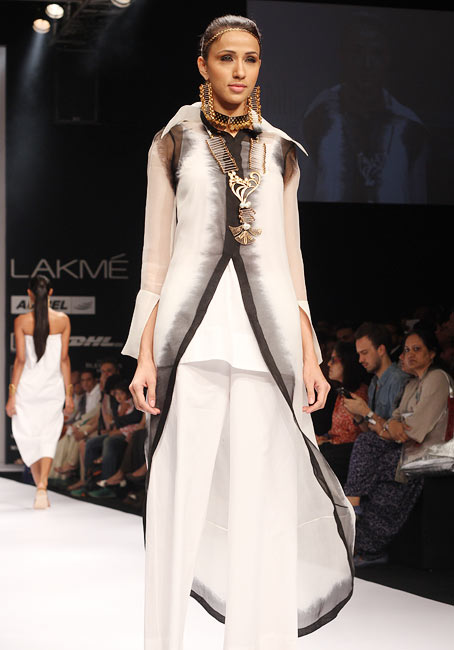
Each business faces its own unique challenges. What were yours?
When I started out there were very few people making contemporary jewellery in Hyderabad. The artisans there were great but weren't open to experimenting newer forms and designs. So I got artisans from Kolkata who I knew of and provided accommodation near the factory.
Language is a problem in India. Since I come from Kolkata, I don't speak Telugu. But Stouvant does and now he's learnt considerable amount of Bengali too!
Raw material was another problem. Hyderabad is known for traditional South Indian jewellery so I have you source, practically everything from either Mumbai or more recently Jaipur.
Jaipur is one of India's largest cutting centres and the only place where you can buy boulders and chip them off the way you want. Over the years, I have developed a relationship of trust with the locals there so it's become a little simpler.
Rising bullion prices affect my costs greatly. When I started out silver was Rs 6 per gram. Now it is about Rs 65. Similarly, the price of copper has gone up as have steel prices. Combating rising metal prices is one of my biggest challenges.
What is your target audience? Who do you keep in mind when you're designing something?
Anobody who has a mind of her own and is not a victim of changing trends.Someone who takes pride in her past and has the courage to to foray into the furture with dignity.
How do you market your products?
We have never actively marketed. Most of the stores we supply to, order continuosly so that is taken care of. Our store in Hyderabad has kind of set in. Now of, course the online retaliers do the marekting for us and fashion weeks help too.

Words of advice for young entrepreneurs...
Firstly, find out if you have a knack for it. Many young people tell me they want to be designers without really knowing how to sketch or draw very well. So the key is to first understand if you have the aptitude for the business you want to start out.
Remember nothing is easy. In the first few years, everyone will tell you what you're doing is a waste of time. Believe in yourself.
Be ready to struggle because there really isn't any shortcut to this.
Know you have competitors and so there is absolutely no place for complacency.
Don't forget your family because your job will keep you away from them and in some of the direst times, you will need their help and support.
Finally, where do you see your company going in the coming years?
Stu and I are quite ambitious about this and want to make this a really big venture. In the next few days, we are starting a B2B sourcing portal, which I believe is a first of sorts. This will help retailers who find it difficult to travel to Hyderabad source our designs.
Eventually I hope to get into sculpture, lifestyle design and also a bit of interior designing. Since I am not trained in any of these, I suspect it'll be a bit of a trail and error.